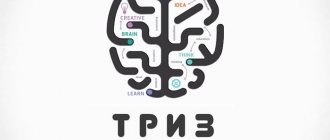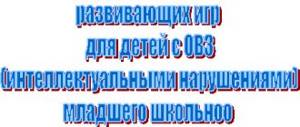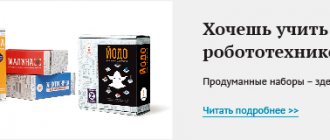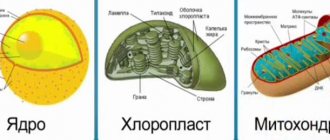Master class “Use of mnemonics in the work of a teacher”
- September 9, 2016
Competition “Methodological piggy bank of a teacher - 2016”
Nomination “Methodological piggy bank of a preschool teacher”
“Teach a child some words unknown to him - he will suffer for a long time and in vain, but associate twenty such words with pictures, and he will learn them on the fly.”
K.D. Ushinsky
Today I will try to explain the concepts of “Mnemonics” and “Mnemotable”, introduce you to the stages of work and show various options for using mnemonic tables.
Slide 3
Teachers often hear the following words from parents: “We don’t remember our poems!!! Can’t quickly remember the text, gets confused in the lines, rearranges words.”
The fact is that mostly children have developed visual memory, rarely children have developed auditory memory, so we need to find techniques that would develop children's memory.
Slide 4
MNEMOTECHNIQUES – a system of special techniques that ensure effective memorization, preservation and reproduction of information. Mnemonics are designed to facilitate memorization and increase memory capacity by forming additional associations.
RELEVANCE OF THE SELECTED TOPIC:
1. Mnemonics make it easier for children to master coherent speech.
2. The child, relying on memory images, establishes cause-and-effect relationships and draws conclusions, thereby developing logical thinking.
3. The use of mnemonics and the use of generalizations allow the child to systematize his direct experience.
Slide 5
TASKS:
1. Develop the ability to understand and tell a text using a graphic analogy.
2. To develop in children mental activity, intelligence, observation, the ability to compare, and identify essential features.
3. Develop mental processes in children: thinking, attention, imagination, memory.
4. Contribute to the solution of inventive problems of a fairy-tale, playful, environmental, and ethical nature.
5. Teach children correct sound pronunciation.
6. To cultivate in children the need for verbal communication for better adaptation in modern society.
Slide 6
A mnemonic table is a diagram that contains certain information. Looking at this diagram, we can describe any animal, what parts of the body it consists of, what kind of ears the animal has, what kind of tail it has, how it moves, what sounds it makes.
Slide 7
Mnemonic tables are also especially effective when learning poems. The point is this: for each word or line, a picture is created; Thus, the entire poem is sketched schematically. After which the child reproduces the entire poem from memory, using a graphic image.
At the initial stage, the adult offers a ready-made plan (scheme), and as they learn, children become involved in the creation process and create their own diagrams.
Slides 8-9
Now I invite you to participate in compiling a mnemonic table when learning a poem. Listen to him:
“THE FIR-STREET” by N. Nishchev
In front of us is a Christmas tree: Cones, needles. Balls, lanterns, Bunnies and candles, Stars, people.
– In front of you are sheets of paper and pencils. I invite you to draw with me. Let's draw schematically.
- “There is a Christmas tree in front of us.” What can we draw for this line? (Christmas tree). Right.
The next line is “Needle cones.” Let's draw... Etc.
– Our poem is “drawn”, the mnemonic table is ready. Now, looking at your mnemonic tables, read the poem without relying on the text. Did you like it? This way you can draw any poem from simple to complex.
– I would like to note that children really like to draw and work with mnemonic tables. A visual diagram acts as a plan for a speech utterance. The child knows where he can start, how to continue and refine his story, and how to complete it. And the process of learning a poem becomes interesting and fast.
I am sure that you will agree with me if I say that what is drawn is imprinted in memory better, because not only the word, but also the image is fixed.
Slide 10
– I would like to offer another type of work with mnemonic tables. This is the use of ready-made schemes of pure sayings and nursery rhymes.
I offer several cards as a sample. Looking at the pictures, I ask you to read the clear sentence. Now close the text and bend it. And then I propose, based only on the diagram, to tell the truth.
– Do you think using a flashcard helps you remember quickly?
Slide 11
– Mnemonic tables can also be used when composing descriptive stories. Looking at the diagram, you can describe any profession, clothing, seasonal changes, or tell a fairy tale.
Slide 12
– Using this diagram as an example, I suggest you play, you guess any vegetable or fruit and, based on the diagram, tell us about it, and we will try to guess it! Try…..
Slide 13
– Using these examples, in a playful way, you can teach your children a poem or retell a literary text, learn how to write a descriptive story, automate the sounds, etc.
This memorization technique can be useful not only for children, but also for you. Just try it and see the result for yourself!
Slide 14
– I think that all the games with mnemonic tables that I showed you today will be useful to you and your children will also like them. They can be used both at work and in the home playroom. It's very interesting and exciting!
results
- children's knowledge about the world around them increases;
- there is a desire to retell texts and come up with interesting stories;
- there is an interest in learning poems and nursery rhymes;
- vocabulary reaches a higher level;
- children overcome timidity and shyness, learn to behave freely in front of an audience.
conclusions
Mastering the techniques of working with mnemonic tables helps in the development of basic mental processes - memory, attention, imaginative thinking, and also reduces the time of learning coherent speech for preschool children. Mnemonics helps make the memorization process simpler, more interesting, and creative.
Presentation for the master class
Author: Natalya Vyacheslavovna Zastolskaya, senior teacher of MBDOU Combined Kindergarten No. 72 of the Sergiev Posad Municipal District.






